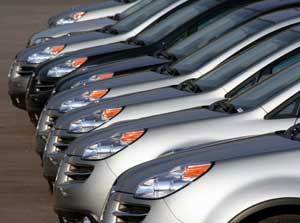Purchasing a new vehicle can be quite a tedious task requiring much research in order to profit. From researching makes of vehicles to loan rates, the information can be overwhelming. How then can one best decide if leasing or buying is the right decision? Take this questionnaire to find out.
Most people find the answer to this to be the decision maker. Can you live with the idea that you are paying on something that isn't yours? If your answer is no, then leasing is not for you regardless of any other promising factors it offers. Leasing is renting. Although there are options to buy the car, most leases end without anything left to show for the years of payment.
Anyone answering yes should seriously consider leasing a vehicle. By purchasing a new vehicle and then using the trade-in to finance another new vehicle as soon as the loan is paid, you are doing something similar to leasing. However, with a lease you may be able to drive the new vehicles more often, turning over leases quicker than paying off car loans.
If driving is something you do in abundance, then reconsider leasing. Most leases carry hefty penalties for going over a set mileage. Anyone with a long work commute or frequent long trips should approach the lease with caution.
If a trade-in or down payment isn't available, purchasing a new car can be near impossible. Leasing allows a person to drive away in a new vehicle with a lesser down payment. Along the same lines, if the monthly payments on a new car are too steep, then leasing offers payments that are almost half the amount of the loan payments. How? Because the lessee is only paying the depreciation of the car's value over the course of the lease. In other words, you only pay for the value lost on the car in that period of years. Along those lines, ask yourself this:
Stained carpets, dents, paint chips, these are all considered "excessive wear." Have this term clearly defined in your lease papers because it all lessens the value of your car at the end of the lease. Less value means higher penalties at the close of the lease. If you purchase the car, you have the same problems trading it in on a newer vehicle down the road.
Most car loans are too high to build significant equity quickly. Interest is paid first, so if the vehicle is traded in before the loan is paid, there often isn't enough equity accumulated to justify the value of the car. For instance, a $24,000 truck can be traded in for its value of $12,000 four years into the loan. The value of the trade then pays off the balance of the loan leaving the car owner to break even. After four years of hefty payments, the former owner is left where he started.

About The Author: Kelly Ann Butterbaugh is a freelance writer who regularly contributes to a variety of magazines as well as online newsletters. She teaches writing in the public school as well as at the collegiate level. Contact her at Englishteach@rcn.com or visit her website at users.rcn.com/
Add your voice! Click below to comment. ThriftyFun is powered by your wisdom!
If you're self-employed and use your car/truck for work (like outside sales), and you don't drive more than 20-24K miles per year, definitely lease. Just about every penny you spend on the vehicle is tax deductable. Keep your old, paid-off car to claim for personal use. If you drive more than 24K miles per year, the monthly payments (or the excess mileage charge at the end of the lease if you guess wrong) can be a killer.
Add your voice! Click below to comment. ThriftyFun is powered by your wisdom!